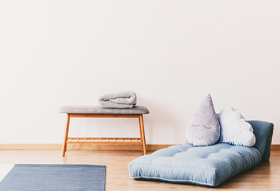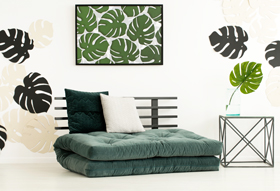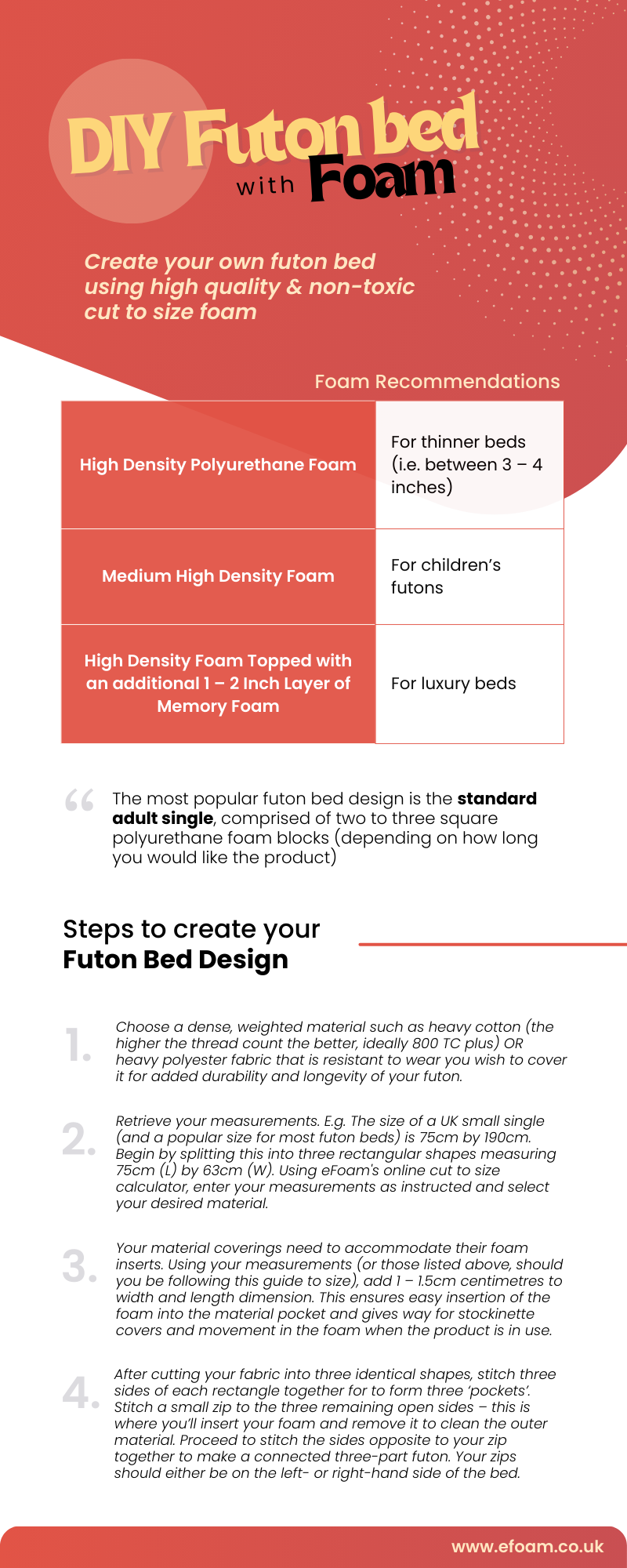
DIY Futon bed with foam

With spare bedrooms being a luxury for most UK households, you may be wondering how best to accommodate your guests within the living space you do have to hand. A popular choice for many decades is a trusty fold-away futon bed. Unlike air beds, futons offer better levels of support and comfort, and of course, do not present the same typical issue of deflation which is often the case with air beds, regardless of their cost or quality.
However, many futon suppliers looking to cash in on demand often create products using poor quality and often toxic foam. A way to overcome this issue is to create your own futon bed using cut to size foam from eFoam. eFoam is proud to offer the highest quality foam at an unbeatable price, and a range of foam types that are non-toxic and manufactured in the UK without the use of harmful chemicals.
For a DIY futon bed, we recommend a high-density polyurethane foam for ‘thinner’ beds (i.e. between 3 – 4 inches) as these will maintain structure under a typical adult weight. For children’s futons, we’d recommend a medium-high density foam, which offers heightened comfort for children who are understandably not as heavy as the average adult. For a more luxury feel, we’d recommend the use of high-density foam topped with an additional 1 – 2 inch layer of memory foam. All of these foams create a easy to clean and care for futon bed that is easily folded and stored.

The most popular futon bed design is the standard adult single, comprised of two to three square polyurethane foam blocks (depending on how long you would like the product). The most popular option is a futon bed that is composed of three parts. To create your DIY bed, first choose the material you wish to cover it. For added durability and longevity of your futon, we’d recommend a dense, weighted material such as heavy cotton (the higher the thread count the better – ideally 800 TC plus), or for added durability, a heavy polyester fabric that is resistant to wear.
Next, retrieve your measurements. The size of a UK small single (and a popular size for most futon beds) is 75cm by 190cm. Begin by splitting this into three rectangular shapes measuring 75cm (L) by 63cm (W). Using our online cut to size calculator, enter your measurements as instructed and select your desired material.
Your material coverings need to accommodate their foam inserts. Using your measurements (or those listed above, should you be following this guide to size), add 1 – 1.5cm centimetres to width and length dimension. This ensures easy insertion of the foam into the material pocket and gives way for stockinette covers and movement in the foam when the product is in use.
After cutting your fabric into three identical shapes, stitch three sides of each rectangle together for to form three ‘pockets’. Stitch a small zip to the three remaining open sides – this is where you’ll insert your foam and remove it to clean the outer material. Proceed to stitch the sides opposite to your zip together to make a connected three-part futon. Your zips should either be on the left- or right-hand side of the bed.
Should you require any advice when sourcing foam for your DIY futon bed, please contact one of our friendly advisors.


